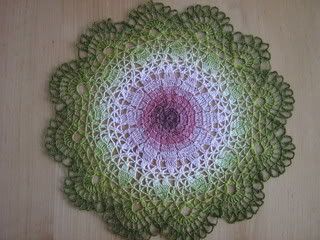The Good Soldier by Ford Madox Ford
 I chose to read this book in company with the Slaves of Golconda, although I had never heard of it before.
I chose to read this book in company with the Slaves of Golconda, although I had never heard of it before.According to the back cover of my Dover Thrift Edition, this book was one of those which earned the author, Ford Madox Ford (of whom I have also never heard), a reputation as one of the major writers of the twentieth century. That piece of paper labeled "Diploma" which states I have earned a degree in English doesn't seem worth much in light of this information, but I'm doing what I can to remedy the situation.
So, knowing absolutely nothing about this book or its author, I set out to read it entirely "cold," and my expectations were not very high. I assumed (silly me) that because I had never heard of it before, it probably wasn't really a great book, and in truth, if I had pulled it off the shelf at the library to read the blurb (unlikely, because the title doesn't strike my fancy at all), I probably would have put it back.
But I did read it, and I was pleasantly surprised. I did enjoy the book, although the story itself is not meant to be "enjoyed," since the narrator, American John Dowell, informs us in the first sentence that, "This is the saddest story I have ever heard." From the first page, we know that two of the four main characters are dead, and that Dowell has suffered a shock or a blow from which he is still reeling.
This book has been called, according to my introductory notes, "the finest French novel in the English language." I'm afraid that conveys little to my mind, as I have not read many French novels. The point is, Ford was influenced by French impressionism, and this novel is impressionist in form and style. The story is not told in a linear fashion, but it is told entirely by John Dowell. During the course of the story, his mood shifts, and his attitude toward the other characters is displayed variously, not constantly. Did he love and cherish his wife, Florence, or did he hate her? Did he admire Edward Ashburnham or was he jealous? Did he care for Leonora or despise her?
This is the story of two couples, the American John and Florence Dowell and the English Edward and Leonora Ashburnham. They are both leisured couples with health concerns that keep them on the continent, at spas, and the four of them together pass nine years in close companionship. And yet Dowell asserts:
But upon my word, I don't know how we put in our time. How does one put in ones' time? How is it possible to have achieved nine years and to have nothing whatever to show for it? Nothing whatever, you understand. Not so much as a bone penholder, carved to resemble a chessman and with a hole in the top through which you could see four views of Nauheim. And, as for experience, as for knowledge of one's fellow being--nothing either.
Underneath that gaping emptiness there are four stories--Edward's, Florence's, Leonora's, and John's. The subtitle of this book is "A Tale of Passion," but I'm not sure that isn't just more irony. Only John gets to tell his story in a form of passionless, ironic humor, but it is enough to reveal that all four them were selfish, self-centered people. They took what they wanted from life, and they did it in fine style, maintaining a veneer--a very good veneer, if John Dowell is to be believed--of respectability, morality, and virtue.
Because the story is told in such a non-linear way, the book bears a second reading, to understand a little better what is happening in each episode. However, I didn't have time to do that. I have come away from the story with an impression (how appropriate, for this impressionist novel)--an impression of four selfish people who sabotaged their own chances of happiness by the weakness of their characters.
The pleasure in reading the book comes from the form--the rambling, conversational style of the narrator, who interrupts himself to tell you about something he saw from the train window, and recalls himself after several pages with something like, "but to get back to the day at the castle... "
Because I prefer character-driven books to plot-driven ones, I didn't mind the rambling style at all. This book serves as an illustration of "the saddest story" that almost everyone has experienced in some form--the unfortunate duplicity between public reputation and private character, and the unfortunate truth that no veneer is strong enough or thick enough to conceal the underlying weaknesses forever. In fact, the more attached to that veneer we are (as John Dowell most certainly was), the more painful will be its inevitable flaking away.
I'd consider this book quite an educational read for me, and I'm not sorry I decided to read along!





